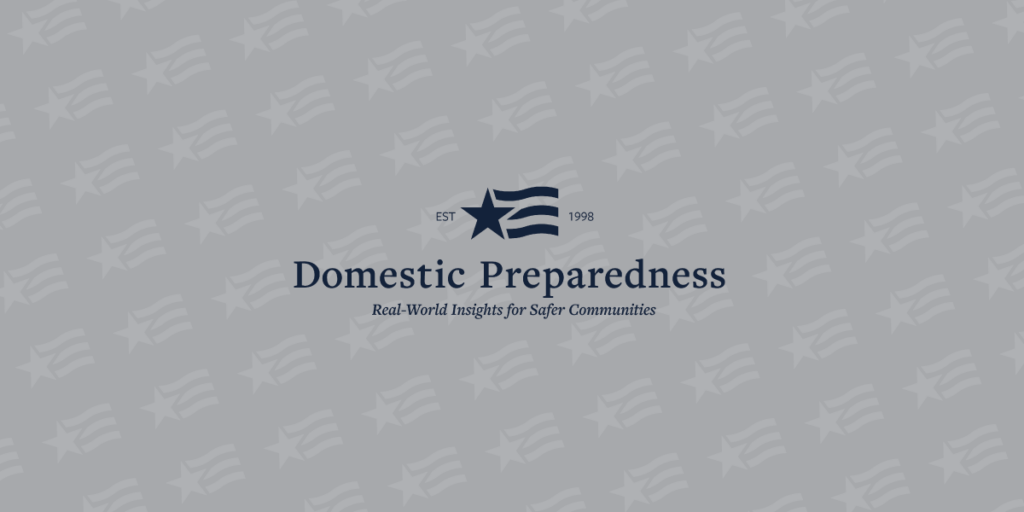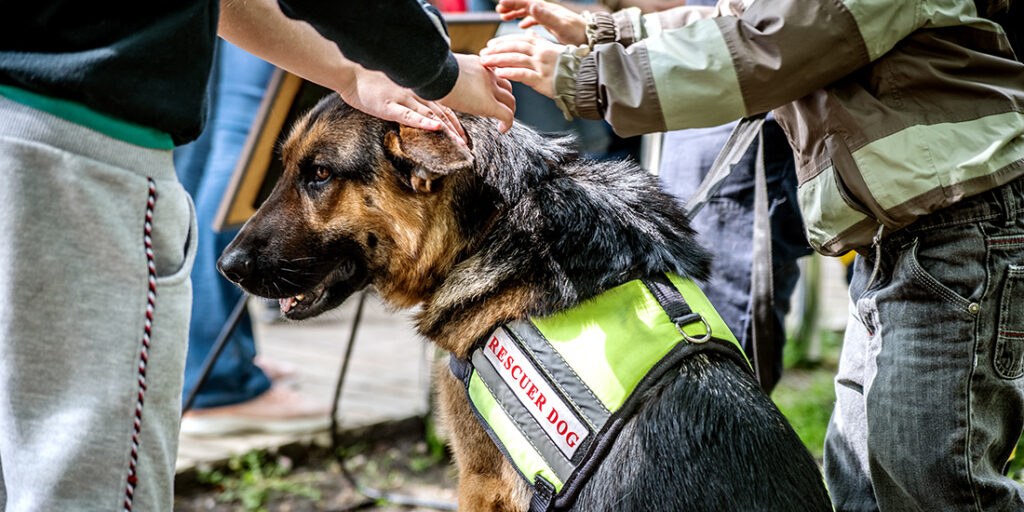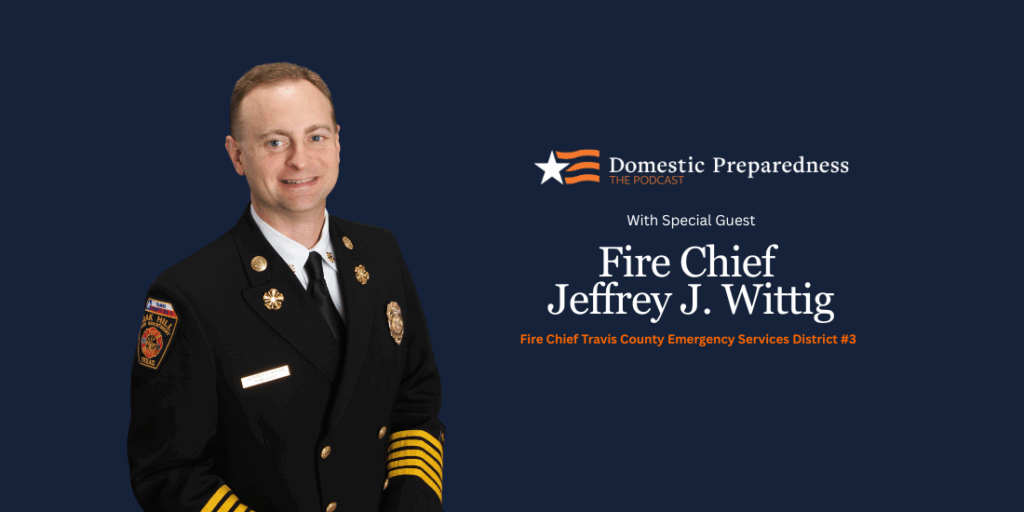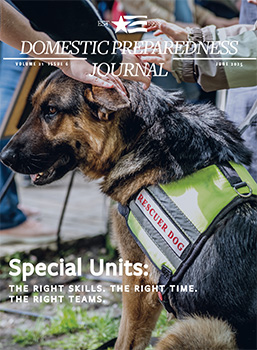Today's Top Picks

Force Multiplier – Empowering the Public
Perhaps one of the biggest myths in emergency management is that the public will panic during a crisis. Instead of panicking, the public often pulls together and even puts themselves in harm’s way to help each other. Furthermore, the public, not first responders, are often first on-site during an emergency. The emergency management community must embrace these realties and provide the public with the knowledge and training necessary to save lives and prevent human suffering.

Autonomous Vehicle Training Challenges for Law Enforcement
In the early morning hours of Saturday, 1 December 2018, a California Highway Patrol (CHP) unit
observed a Gray Tesla Model S traveling southbound on US-101 at about 70 mph. The CHP unit, a
two-officer patrol, pulled alongside of the Tesla and noticed that the single driver/occupant appeared
to be asleep. Activating the CHP unit emergency lights and siren failed to wake the driver. Apparently,
the Tesla Autopilot, a semi-autonomous driving feature was “assisting” the vehicle from running off the
roadway. According to the CHP report, the officers proceeded to pull the CHP unit in front of the Tesla
and, using the autonomous crash avoidance safety system, the vehicle was slowed without colliding with
the CHP unit. The Tesla driver was awakened by the officers at his door, whereupon the driver,
displaying intoxicated behavior, was placed in custody and charged with driving under the influence
(DUI). Autonomous vehicles pose this and other challenges for law enforcement agencies.

Force Multipliers for Public Safety
As a hurricane approaches, a leader must decide whether to issue an order to evacuate or to shelter
in place. When creating active shooter plans, school officials must determine what information can and
should be shared to mitigate the threat. To mitigate disaster, each community must consider the unique
risks and threats that it faces. As emergency preparedness professionals age, they must engage youths to
ensure future resilience. This edition of the DomPrep Journal highlights four key force multipliers for
promoting public safety: information sharing, crisis leadership, situational awareness, and youth
engagement.

Balancing Privacy & School Safety Within FERPA
On 2 January 2019, the Marjory Stoneman Douglas High School Public Safety Commission (MSDHSPSC) released its initial report. The commission report addressed many critical issues and lessons learned within its 15 chapters. The chapter on information sharing discussed the actual or perceived restrictions from privacy laws such as the Family Educational Rights and Privacy Act (FERPA). The discussion addressed several areas where there is significant confusion and dispute that continues until today, and directly impacts safety and security planning, preparedness, and collaboration.
Trending
 Bridging Communication Gaps: Lessons from Hurricane Helene by Greg Hauser Hurricanes in 2024 caused widespread damage to infrastructure, leading to a critical but often overlooked issue: isolation. Physical and technological…
Bridging Communication Gaps: Lessons from Hurricane Helene by Greg Hauser Hurricanes in 2024 caused widespread damage to infrastructure, leading to a critical but often overlooked issue: isolation. Physical and technological… A Systems Thinking Approach to Improving Emergency… by William Chapman “PACE” planning helps organizations fail gracefully, but systems thinking reduces the likelihood of failure altogether. Combining both approaches helps organizations…
A Systems Thinking Approach to Improving Emergency… by William Chapman “PACE” planning helps organizations fail gracefully, but systems thinking reduces the likelihood of failure altogether. Combining both approaches helps organizations… Disaster Stress Management in an Emergency Operations Center by Mary Schoenfeldt Disasters affect responders and community members, but they also bring trauma to those working inside emergency operations centers. Distance from…
Disaster Stress Management in an Emergency Operations Center by Mary Schoenfeldt Disasters affect responders and community members, but they also bring trauma to those working inside emergency operations centers. Distance from… Why Emergency Management Is a Good Career for… by Mathew Perrill For many service members, the transition from the military to a civilian workforce can be challenging. They have been trained…
Why Emergency Management Is a Good Career for… by Mathew Perrill For many service members, the transition from the military to a civilian workforce can be challenging. They have been trained…Trending
 Disaster Stress Management in an Emergency Operations Center by Mary Schoenfeldt Disasters affect responders and community members, but they also bring trauma to those working inside emergency operations centers. Distance from…
Disaster Stress Management in an Emergency Operations Center by Mary Schoenfeldt Disasters affect responders and community members, but they also bring trauma to those working inside emergency operations centers. Distance from… Why Emergency Management Is a Good Career for… by Mathew Perrill For many service members, the transition from the military to a civilian workforce can be challenging. They have been trained…
Why Emergency Management Is a Good Career for… by Mathew Perrill For many service members, the transition from the military to a civilian workforce can be challenging. They have been trained… Bridging Communication Gaps: Lessons from Hurricane Helene by Greg Hauser Hurricanes in 2024 caused widespread damage to infrastructure, leading to a critical but often overlooked issue: isolation. Physical and technological…
Bridging Communication Gaps: Lessons from Hurricane Helene by Greg Hauser Hurricanes in 2024 caused widespread damage to infrastructure, leading to a critical but often overlooked issue: isolation. Physical and technological… A Systems Thinking Approach to Improving Emergency… by William Chapman “PACE” planning helps organizations fail gracefully, but systems thinking reduces the likelihood of failure altogether. Combining both approaches helps organizations…
A Systems Thinking Approach to Improving Emergency… by William Chapman “PACE” planning helps organizations fail gracefully, but systems thinking reduces the likelihood of failure altogether. Combining both approaches helps organizations…Trending
Bridging Communication Gaps: Lessons from Hurricane Helene by Greg Hauser Hurricanes in 2024 caused widespread damage to infrastructure, leading to a critical but often overlooked issue: isolation. Physical and technological…
A Systems Thinking Approach to Improving Emergency… by William Chapman “PACE” planning helps organizations fail gracefully, but systems thinking reduces the likelihood of failure altogether. Combining both approaches helps organizations…
Disaster Stress Management in an Emergency Operations Center by Mary Schoenfeldt Disasters affect responders and community members, but they also bring trauma to those working inside emergency operations centers. Distance from…
Why Emergency Management Is a Good Career for… by Mathew Perrill For many service members, the transition from the military to a civilian workforce can be challenging. They have been trained…
Domestic Preparedness Journal
Featured in this issue
- Special Units and Underutilized Resources
- Law Enforcement and Multidisciplinary Teams
- Public Order Policing Units in Disasters
- State Defense Forces in Emergency Response
- Emergency Carcass Operations
- Wildfire PREsponse: Closing the Gap With Mitigation
- Scouts and the Value of Prepared Youth
- Service Dogs: What First Responders Need to Know
- Emergency Management for Transitioning Veterans
- Podcast – Reframing Hurricane Response: Craig Fugate on Survivors as a First Line of Defense
- Podcast – Built to Serve: Chief Jeffrey J. Wittig on TIFMAS, Teamwork, and Emergency Response
Articles Out Loud

Article Out Loud – Law Enforcement Collaboration Within Multidisciplinary Teams
June 25, 2025
This is an article by Richard Schoeberl and Anthony (Tony) Mottola, an Article Out Loud from Domestic Preparedness, June 25,

Article Out Loud – State Defense Forces: The Untapped Backbone of Emergency Response
June 25, 2025
This is an article by Robert Hastings, an Article Out Loud from Domestic Preparedness, June 25, 2025. As disasters become






High School Interns – A Valuable Community Resource